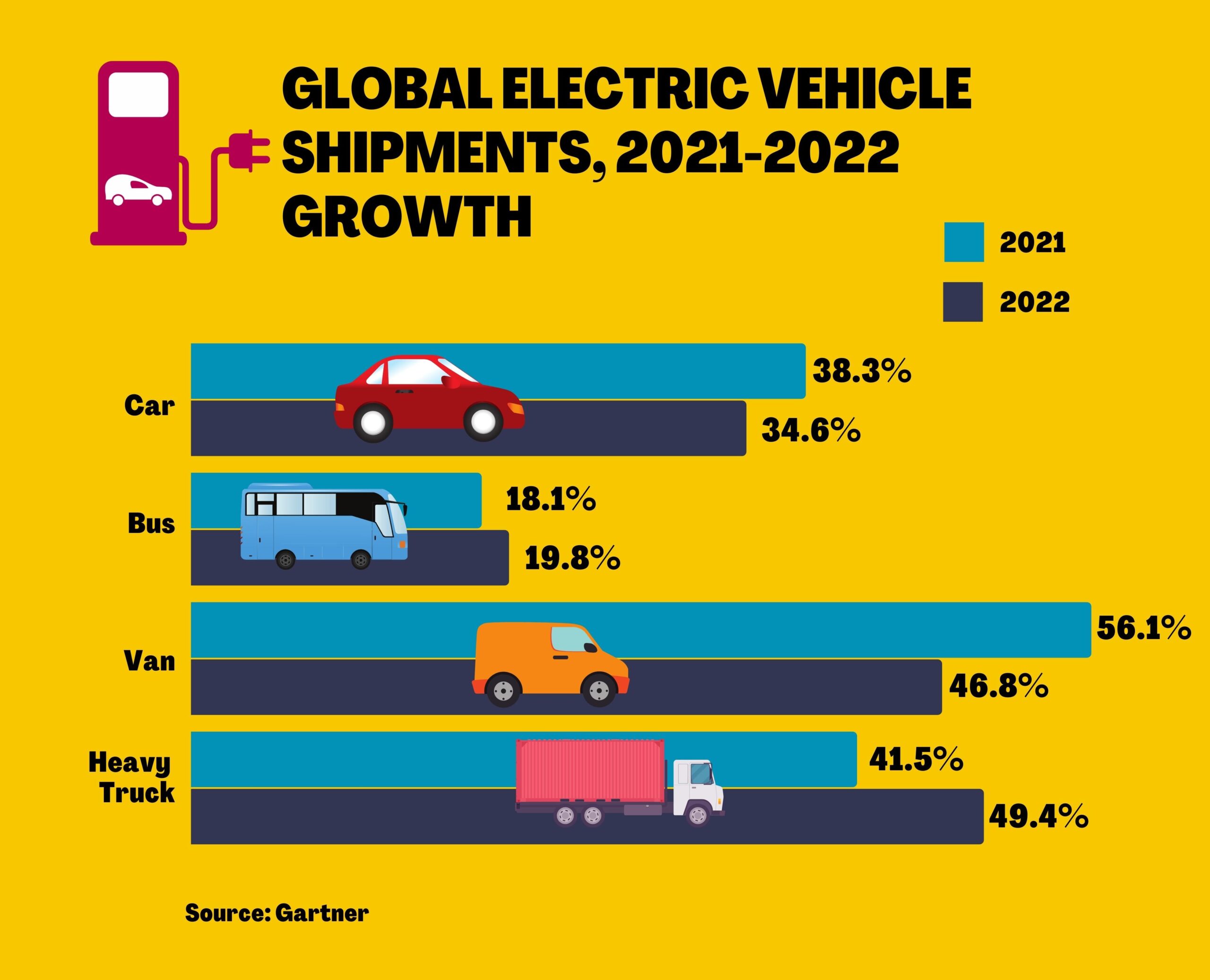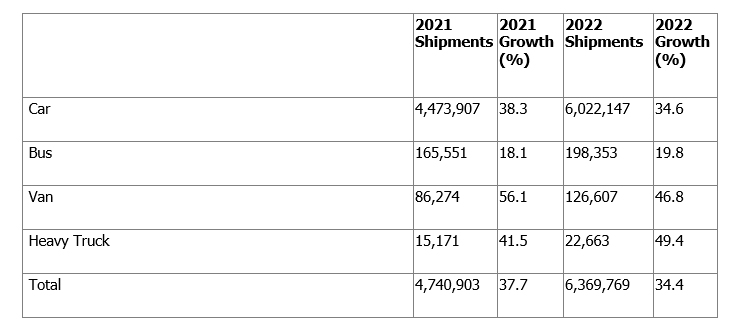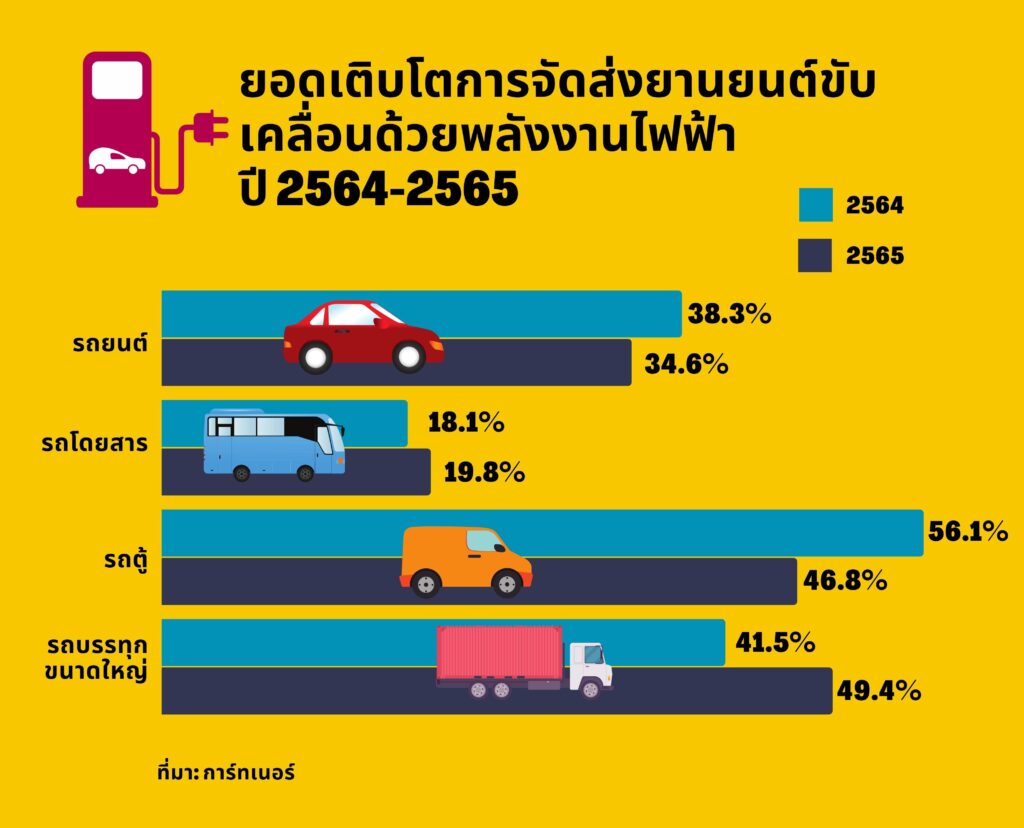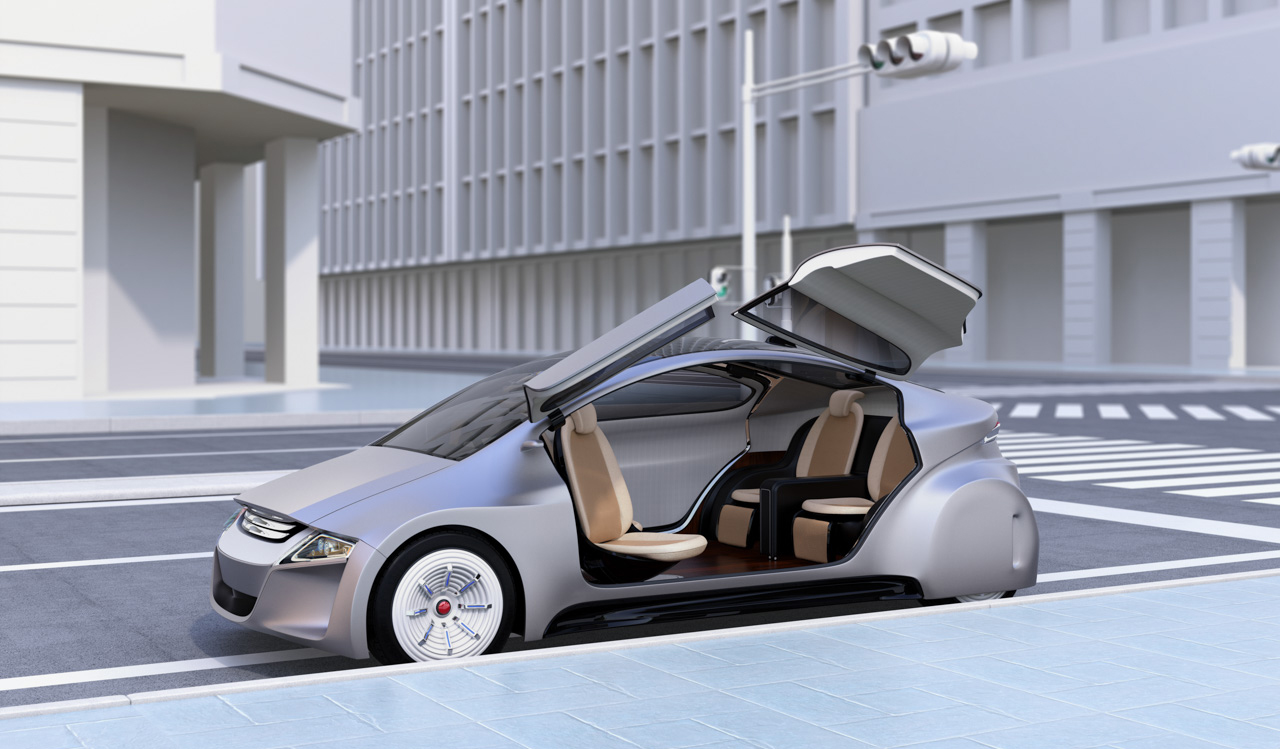By 2022, the Number of Global Public EV Chargers Will Total 2 Million Units

Six million electric cars (battery electric and plug-in hybrid) will be shipped in 2022, up from 4 million in 2021, according to a new forecast by Gartner, Inc.
“At COP26 in November 2021, the Zero Emission Vehicle Transition Council agreed that vehicle manufacturers will commit to selling only zero emission vehicles by 2040, and earlier in leading markets, putting pressure on the automotive sector to prepare for the decarbonization in transportation. EVs are an important powertrain technology to help reduce CO2 emissions from the transportation sector,” said Jonathan Davenport, research director at Gartner. “The ongoing shortage of chips will impact the production of EVs in 2022, and while shipments of vans and trucks are currently small, their shipments will grow rapidly as commercial owners see the financial and environmental benefit of electrifying their fleets.”
Gartner forecasts that electric cars will represent 95% of total EV shipments in 2022 and the remainder will be split between buses, vans and heavy trucks (see Table 1).
Table 1: Global Electric Vehicle Shipments, 2021-2022 (Actual Units)
 Due to rounding, some figures may not add up to the totals shown.
Due to rounding, some figures may not add up to the totals shown.
Source: Gartner (January 2022)
Greater China and Western Europe to Lead in EV Shipments in 2022
With China imposing a mandate on automakers requiring that EVs make up 40% of all sales by 2030 and automakers establishing new factories for manufacturing electric cars, Gartner estimates that Greater China will account for 46% of global EV shipments in 2022. Greater China will take the No. 1 position in shipments globally, shipping 2.9 million EVs in 2022. Western Europe is on pace to ship 1.9 million units in 2022, ranking No. 2 in EV shipments. North America is expected to be the third highest region in shipments at 855.3 thousand EVs in 2022.
“The EU’s plans to cut CO2 emissions from cars by 55% and vans by 50% by 2030 is a catalyst to the uptake of EVs in Europe,” said Davenport.
As governments across the world introduce new regulations and incentives to fuel EV sales, the automotive industry is also increasing investment in companies that provide charging infrastructure and vehicle battery technology to support and bolster the transition to EVs by consumers and businesses. Gartner forecasts that the number of global public EV chargers will rise from 2.1 million units in 2022, up from 1.6 million units in 2021.
Challenges to Mass EV Deployment Remain
To foster the transition to EVs, automotive manufacturers will have to address several factors such as lowering the price of EVs and batteries, recycling EV batteries, offering a wider selection of vehicle models with more extensive driving range and improving charging infrastructure.
“Additionally, a major issue that must be addressed is lack of fast-charging availability for home and public charging,” said Davenport. “Utility providers will need to increase their investments in smart grid infrastructure to cope with the growing consumption of electricity. Additionally, to meet climate change ambitions, countries which utilize fossil fuels to generate electricity will need to redesign their power generation to respond to the transition.”
ในปีนี้ทั่วโลกมีจุดชาร์จไฟสาธารณะสำหรับรถยนต์ไฟฟ้ารวม 2 ล้านจุด

การ์ทเนอร์คาดการณ์ยอดจัดส่งรถยนต์ขับเคลื่อนด้วยพลังงานไฟฟ้า (แบบใช้พลังงานจากแบตเตอรี่และแบบปลั๊กอิน-ไฮบริด) ในปี 2565 จะเพิ่มขึ้นเป็น 6 ล้านคัน จาก 4 ล้านคันในปี 2564
โจนาธาน ดาเวนพอร์ท ผู้อำนวยการฝ่ายวิจัยของการ์ทเนอร์ กล่าวว่า “จากที่ประชุม COP26 เมื่อเดือนพฤศจิกายนปีที่แล้ว สมาพันธ์ Zero Emission Vehicle Transition Council มีข้อตกลงเห็นพ้องตรงกันว่า ภายในปี 2583 ผู้ผลิตรถยนต์จะเดินหน้าผลิตและจำหน่ายยานพาหนะที่ปล่อยมลพิษเป็นศูนย์ จากที่ก่อนหน้านี้ได้กดดันให้ผู้ผลิตในตลาดรถยนต์ชั้นนำเตรียมพร้อมรับมือกับแนวทางการลดการปล่อยก๊าซคาร์บอนฯ กับภาคการขนส่ง ทั้งนี้ยานยนต์ไฟฟ้า (หรือ EVs) นั้นเป็นเทคโนโลยีระบบส่งกำลังที่มีความสำคัญต่อการช่วยลดการปล่อย CO2 ในภาคการขนส่ง ภาวะขาดแคลนชิปยังส่งผลกระทบต่อเนื่องกับยอดการผลิตรถยนต์พลังงานไฟฟ้าในปีนี้ แม้สัดส่วนการจัดส่งรถยนต์พลังไฟฟ้าประเภทรถตู้ (Vans) และรถบรรทุก (Trucks) ยังมีขนาดเล็กในปัจจุบัน แต่การจัดส่งยานยนต์ในกลุ่มนี้จะเติบโตอย่างรวดเร็วเมื่อเจ้าของกิจการเล็งเห็นถึงประโยชน์ทั้งต่อสิ่งแวดล้อมและด้านการเงิน เมื่อเปลี่ยนมาใช้พลังงานไฟฟ้า”
การ์ทเนอร์คาดว่ารถยนต์ (Cars) จะมีสัดส่วนจัดส่งสูงถึง 95% ของตลาดยานยนต์พลังงานไฟฟ้าทั้งหมดในปี 2565 ส่วนที่เหลือจะแบ่งเป็น รถโดยสาร (Buses) รถตู้ (Vans) และรถบรรทุกขนาดใหญ่ (Heavy Trucks) (ดูตามตารางที่ 1)
ตารางที่ 1: ปริมาณการจัดส่งยานยนต์ไฟฟ้าทั่วโลก ปี 2564-2565 (หน่วยตามจริง)
 เนื่องจากการปัดเศษ ทำให้ตัวเลขบางตัวรวมกันแล้วไม่ตรงกับจำนวนรวมทั้งหมด
เนื่องจากการปัดเศษ ทำให้ตัวเลขบางตัวรวมกันแล้วไม่ตรงกับจำนวนรวมทั้งหมด
ที่มา: การ์ทเนอร์ (มกราคม 2565)
ประเทศจีนและยุโรปตะวันตกมียอดจัดส่งยานยนต์พลังงานไฟฟ้าสูงสุดในปีนี้
ด้วยนโยบายของสาธารณรัฐประชาชนจีนที่มีคำสั่งให้ภายในปี 2573 ผู้ผลิตรถยนต์ต้องผลิตรถยนต์พลังงานไฟฟ้าในสัดส่วน 40% ของยอดจำหน่ายรถยนต์ทั้งหมด รวมถึงการจัดตั้งโรงงานผลิตรถยนต์พลังงานไฟฟ้าขึ้นใหม่ การ์ทเนอร์คาดว่าประเทศจีนจะกลายเป็นผู้นำอันดับ 1 ที่ครองยอดการจัดส่งรถยนต์พลังงานไฟฟ้า โดยมีสัดส่วนราว 46% ของการจัดส่งรถยนต์พลังงานไฟฟ้าทั้งหมดทั่วโลกในปีนี้ โดยมียอดจัดส่งสูงถึง 2.9 ล้านคัน ขณะที่ฝั่งยุโรปตะวันตกจะอยู่ในอันดับที่ 2 ด้วยยอดการจัดส่งที่ 1.9 ล้านคัน และตามมาด้วยอันดับสามคือผู้ผลิตจากอเมริกาเหนือ ที่คาดว่าจะมียอดจัดส่งอยู่ราว 855,300 คัน
“แผนของสหภาพยุโรป (EU) ที่ต้องการลดการปล่อยก๊าซคาร์บอนไดออกไซด์ (CO2) จากการใช้รถยนต์ให้ได้ที่ 55% และรถตู้ที่ 50% ภายในปี 2573 เป็นการกระตุ้นตลาดรถยนต์พลังงานไฟฟ้าที่สำคัญในยุโรป” ดาเวนพอร์ท กล่าวเพิ่มเติมว่า
จากการที่รัฐบาลในประเทศต่าง ๆ ทั่วโลกหันมาให้ความสำคัญ ออกกฎระเบียบและใช้มาตรการกระตุ้นต่าง ๆ เพื่อผลักดันยอดจำหน่ายรถยนต์พลังงานไฟฟ้าเพิ่มมากขึ้น นั่นทำให้อุตสาหกรรมยานยนต์เพิ่มการลงทุนในบริษัทที่เป็นผู้วางโครงสร้างพื้นฐานจุดชาร์จไฟและเทคโนโลยีแบตเตอรี่ในรถยนต์ เพื่อส่งเสริมและสนับสนุนให้ผู้บริโภคและภาคธุรกิจเปลี่ยนมาใช้รถยนต์พลังงานไฟฟ้า การ์ทเนอร์คาดว่า ในปีนี้จะมีจำนวนจุดชาร์จไฟฟ้าสาธารณะทั่วโลกเพิ่มขึ้นเป็น 2.1 ล้านจุด จากเดิม 1.6 ล้านจุด เมื่อปี 2564
ปัจจัยท้าทายการใช้รถยนต์ไฟฟ้ายังมีอยู่อีกมาก
เพื่อส่งเสริมการเปลี่ยนมาใช้รถยนต์พลังงานไฟฟ้า ผู้ผลิตจะต้องจัดการกับปัจจัยหลายประการ อาทิ การลดราคารถยนต์พลังงานไฟฟ้าและแบตเตอรี่ การรีไซเคิลแบตเตอรี่ การนำเสนอรถยนต์พลังงานไฟฟ้ารุ่นต่าง ๆ ที่หลากหลายกว่าเดิม พร้อมยืดระยะการขับให้ได้ระยะไกลขึ้น รวมถึงการปรับปรุงโครงสร้างพื้นฐานในเรื่องจุดชาร์จไฟฟ้า
ดาเวนพอร์ท กล่าวเพิ่มเติมว่า “นอกจากนี้ ยังมีความท้าทายสำคัญที่ต้องเร่งแก้ไข นั่นคือ จำนวนจุดชาร์จไฟฟ้าแบบเร็วที่บ้านและตามพื้นที่สาธารณะต่าง ๆ ที่ยังขาดแคลน โดยผู้ให้บริการสาธารณูปโภคจะต้องเพิ่มการลงทุนในโครงสร้างพื้นฐานไฟฟ้าสมาร์ทกริดเพื่อรับมือกับปริมาณการใช้ไฟฟ้าที่เพิ่มขึ้น และตอบสนองต่อเป้าหมายทางด้านสิ่งแวดล้อมและการเปลี่ยนแปลงของสภาพภูมิอากาศ โดยประเทศที่ยังใช้เชื้อเพลิงฟอสซิลเพื่อผลิตไฟฟ้าจะต้องออกแบบระบบการผลิตไฟฟ้าใหม่เพื่อรองรับการเปลี่ยนแปลงดังกล่าว”

 Due to rounding, some figures may not add up to the totals shown.
Due to rounding, some figures may not add up to the totals shown.

 เนื่องจากการปัดเศษ ทำให้ตัวเลขบางตัวรวมกันแล้วไม่ตรงกับจำนวนรวมทั้งหมด
เนื่องจากการปัดเศษ ทำให้ตัวเลขบางตัวรวมกันแล้วไม่ตรงกับจำนวนรวมทั้งหมด